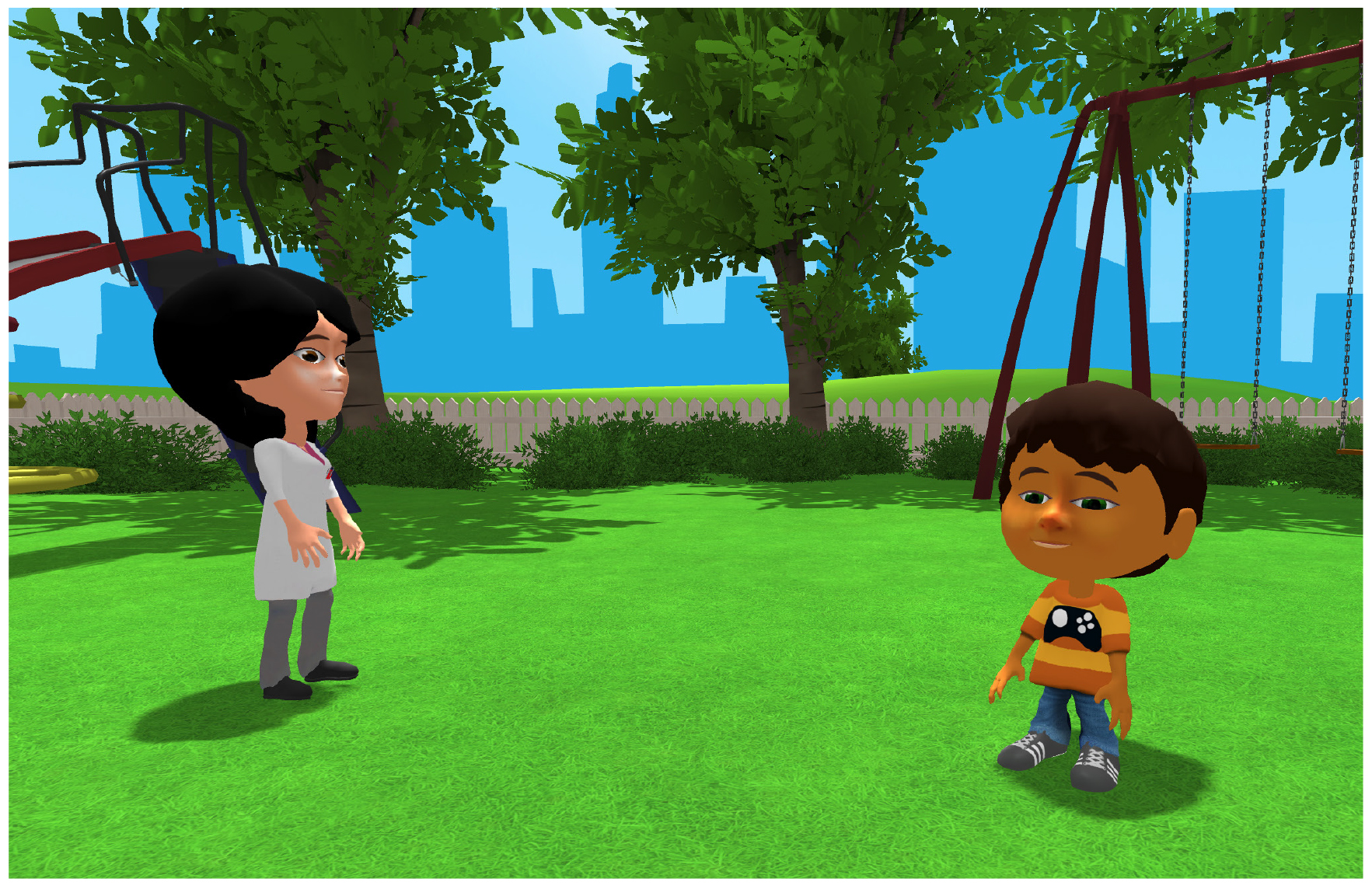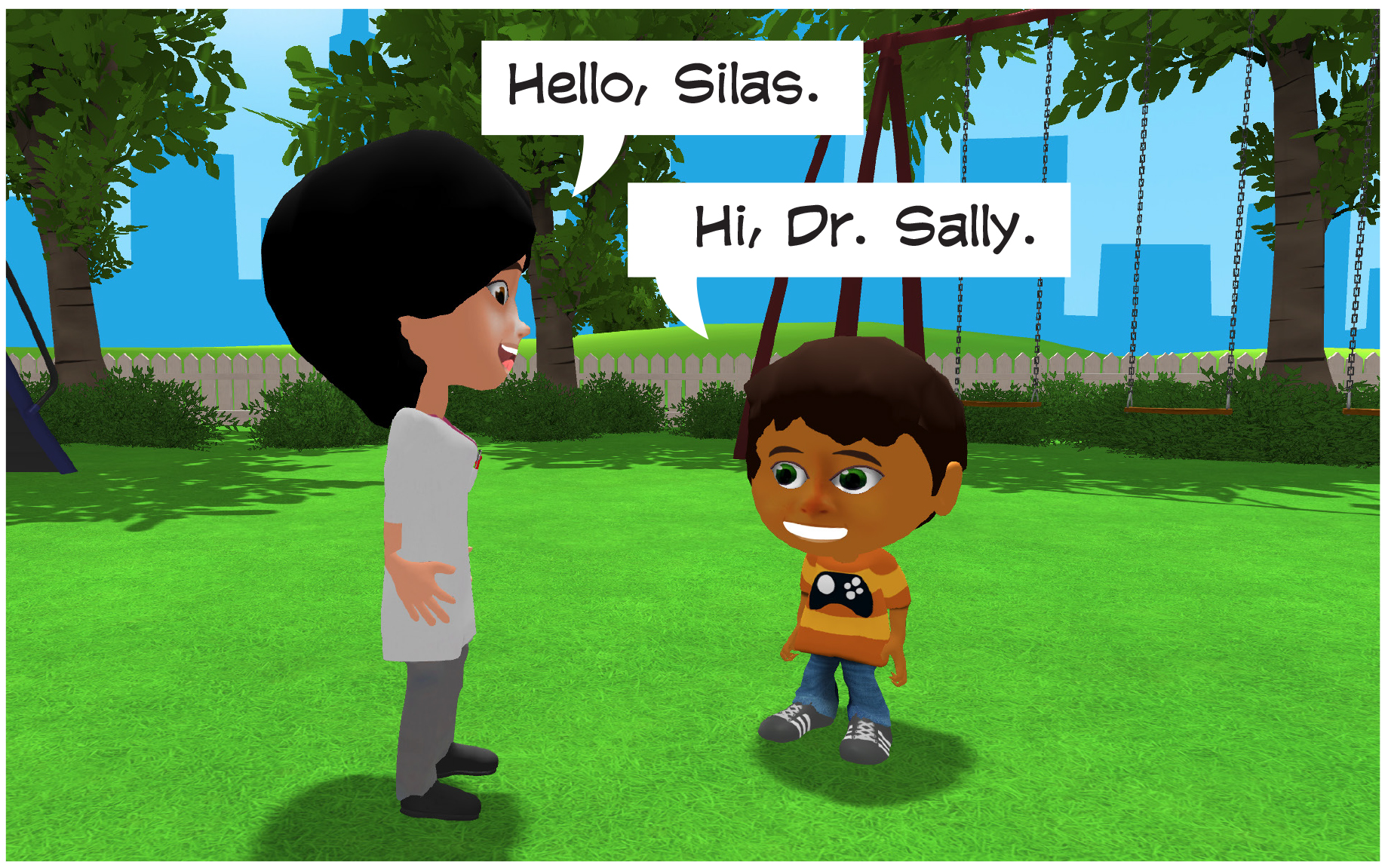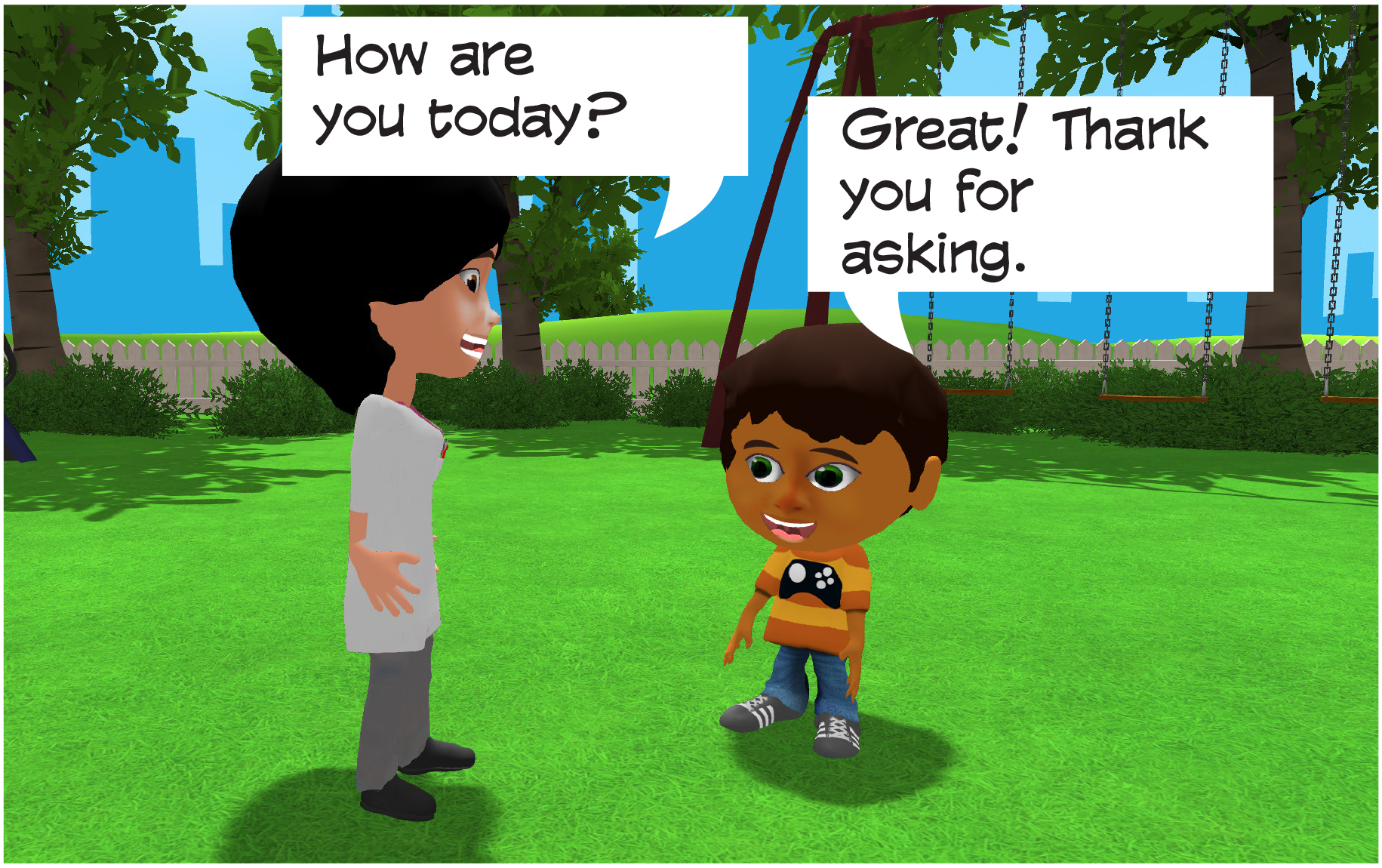"Hi" and "Bye" - 1
Basic
Teachers
Goal: In social situations, the student will utilize a traditional introductory exchange in 8 out of 10 observable opportunities, as measured by a teacher assessment tool.
Objectives:
1. Initiate a greeting using words or phrases such as: hello, goodbye, have a nice day, (etc.).
2. Respond to a greeting directed at the student.
3. Use hand waves, thumbs up or other gestures to communicate appropriate greetings to peers and adults.
Standards: Click on the appropriate link below to view Language Arts standards included in this lesson.
Definition of Key Terms: Saying “Hi” is a greeting. It is important to say hi when you are meeting someone you know or someone new. Saying, “Bye” is a farewell. It is important to say bye when you are leaving someone you know or someone you just met. You can greet someone with words or phrases or hand gestures (such as a hand wave). You can bid someone farewell with words or phrases or hand gestures (such as a hand wave).
Discussion Points:
- You can greet someone with appropriate words or gestures.
- You can say goodbye with appropriate words or gestures.
- You should appropriately reply to someone who has greeted you or said goodbye to you.
- Using greetings is an important part in the process of interacting with others to form and maintain friendships.
Directions for In-Person or Virtual Learning: You have three options for students to complete this lesson.
- Option 1: Print the Student Activity Sheet for each student. Complete the lesson as a group and assign the activity sheet to the students.
- Option 2: Click the Student link to access the activity sheet electronically and post to your Learning Management System (if your school has one) or send the link to the student. The student may complete the activity sheet electronically within the classroom on a shared computer or device.
- Option 3: Click the Student link to access the activity sheet electronically and send the link to the student. The student may access the link from a home computer, chromebook, iPad or other device.
Activity 1: Circumstances
Discuss the importance of saying hi and bye to others with the students. Ask students how they typically say hello to others (someone new, friends, classmates, teachers, adults, etc.) and how they say goodbye to those they know or just met. Ask students to share what situations that they would greet someone or be sure to say goodbye to someone.
- Scenarios
Using the scenarios below or your own you have created, ask the students to role play.
- A student is ringing a doorbell and saying "Hi."
- Answering the phone and saying "Hi."
- Saying "Hi" to the bus driver.
- Saying "Hi" to a teacher.
Activity 2: Role Play
Review the key points from Activity 1. Assign each student a peer or adult partner. Distribute a copy of Student Activity Sheet A to each pair. Ask each pair to role play the situation on the activity sheet.
- Student Activity Sheet A
Afterwards, gather the students together and ask for suggestions on what else SiLAS could have said to Dr. Sally. You may also want to discuss other words/phrases that SiLAS could have used to greet Dr. Sally.
Student Activity Sheet A
Directions: Practice saying “Hi” or “Bye” while role playing the following situations with a partner.
1. The student is walking through the park.

2. A teacher walks towards the student.

3. The student and the teacher make eye contact and greet each other.

4. They finish their greeting.

5. What else could Silas have said to Dr. Sally?
Activity 3: Comic Strip Worksheet
Review the key points from Activities 1 and 2. Be sure to discuss appropriate and inappropriate ways to greet someone.
Allow students time to complete Student Activity Sheet B. When finished, have students share their answers.
- Student Activity Sheet B - 1 per student
- Pencil for each student
Student Activity Sheet B
Directions: Study the comic strips below. Check or circle the answers that show the characters saying "hi" appropriately.
Lesson Extension: Listening Comprehension
Explain that a script is a form of dialogue writing between characters in a movie, play, or broadcast. Utilizing the immersive reader students should listen carefully as the teacher plays the example scripts below. Replay the script if needed. Allow students time to answer the questions on Student Activity Sheet C.
- Student Activity Sheet C - 1 per student
- Pencil for each student
After students have finished and if time allows, ask students to partner together to role play the script.
This is an appropriate example of saying “Hi.”
Kim: Hello my name is Kim. What is your name?
Beth: Hello Kim, it is nice to meet you. My name is Beth.
Kim: Would you like to eat lunch with me today?
Beth: Yes, let’s go!
Read Aloud Recommendations: Completing a read aloud with students is a great way to connect text with lesson content while incorporating reading and language practice. Below are suggested titles including, a YouTube link, Lexile and Grade Level information for books relating to the lesson.
| Book Title | Author | Grade Level | Lexile Level |
|---|---|---|---|
| Say Hello! | Rachel Isadora | Pre K-K | AD470L |
| Goodbye, Friend! Hello, Friend! | Cori Doerrfeld | Pre K-K | AD470L |
Student Activity Sheet C
Directions: Draw a comic to match the script you listened to.
Application Activity
In small groups, have the students create scripts demonstrating how to appropriately greet and say goodbye to people. Use the script sheet to assist the groups in creating scripts.
- Script sheet for each group
- Pencil for each student
Have students record their scripts using the SiLAS software. Remind students to name and save their recordings. Premiere the movies with the group members at the end of each session.
Script Extensions:
Click the following hyperlinks to have students choose their Characters, Background and Props prior to writing scripts. For examples of script writing accommodations, click Here.
Ideas for modifying this activity based on your students’ needs:
- create a script as a class
- pair or group students so that skill levels are varied and assign each a role or task that uses their skill
- create the script by recording the dialog with a phone or other recording device.
This is an appropriate example of saying “Hi.”
Kim:Hello my name is Kim. What is your name?
Beth: Hello Kim, it is nice to meet you. My name is Beth.
Kim:Would you like to eat lunch with me today?
Beth: Yes, let’s go!
This is an appropriate example of saying “Bye.”
Kim:Hello my name is Kim. What is your name?
Beth: Hi, my name is Beth. I like to go to the movies.
Kim:Me too! Oh, I have to go. Bye, Beth!
Beth: Okay! Bye, Kim!
Topic Checkout
Review key points from previous lessons with students. Ask students to complete the Student Topic Checkout. Discuss their answers as a group when finished.
- Student Topic Checkout - 1 per student
- Pencil for each student
Student Topic Checkout
Directions: Complete the following questions.
1. When should you say “Hi”?